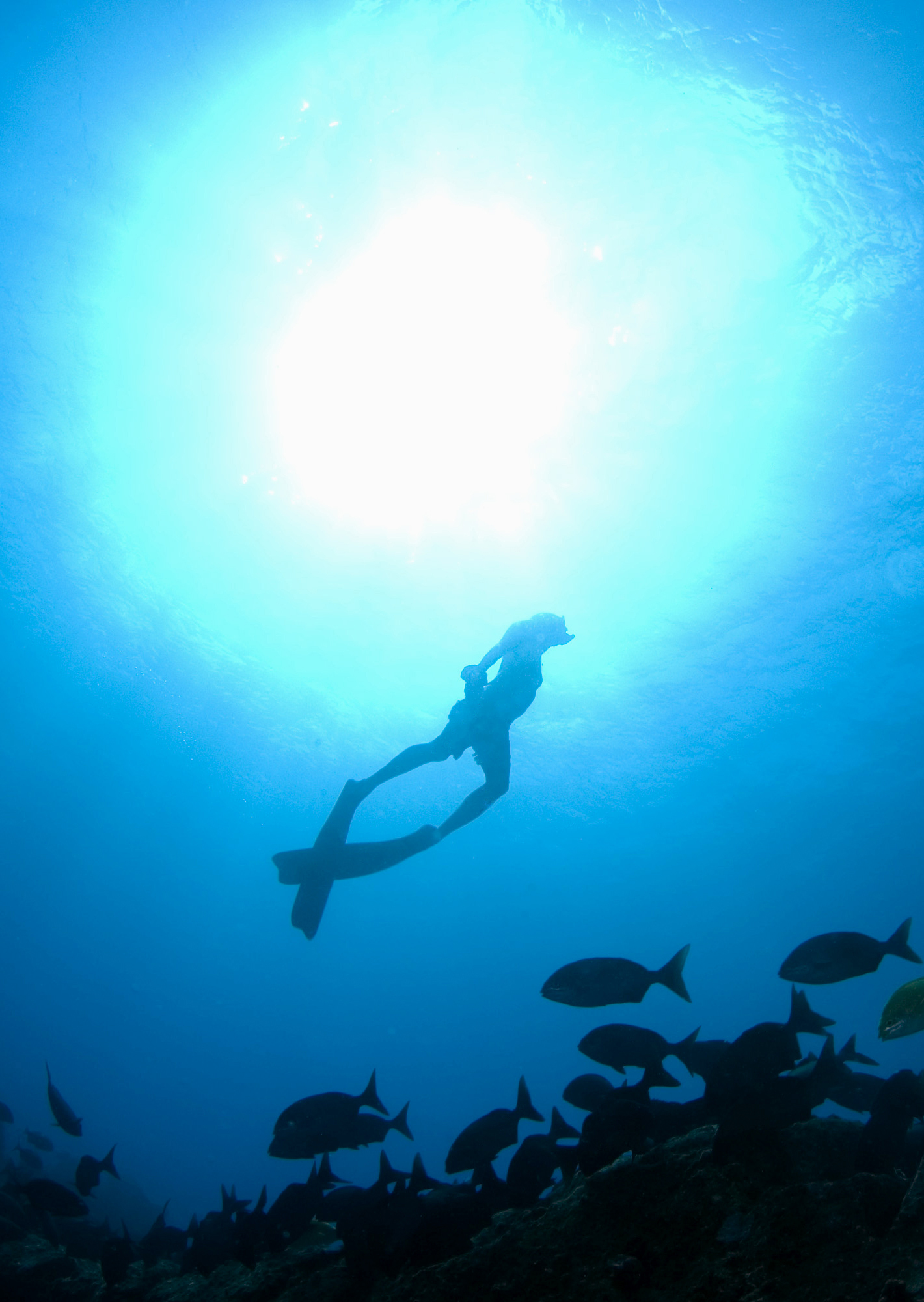
Credit: Greg McFall/Flikr
The appeal of freediving may lie in its freedom. Freedivers, without cumbersome scuba gear and noisy regulators, easily glide through tranquil waters toward coral or rocky reefs with scenes unobstructed by bubble trails. With dives often exceeding five minutes, they get to see up close and personal the colorful marine life that typically flees from noisy scuba divers. Freedivers can extend their time underwater by hyperventilating—breathing in and out rapidly—before diving. This allows more oxygen into the lungs, but if the dive is not planned and executed well, it can also have dangerous results.
Oxygen is key to our survival: It’s used to make ATP, a molecule that fuels everything we do. When we breathe in, oxygen in the air travels into our lungs, goes into our blood and finally makes it to our cells, where ATP is produced. Carbon dioxide (CO2) is also made during ATP production. As we make more and more ATP, CO2 builds up. To get rid of this accumulated CO2, CO2 flows from the cells to the blood and then into the lungs, where we eventually exhale it.
The presence of CO2 in our lungs means there is less room for oxygen. Hyperventilating can cut the amount of CO2 in half, allowing more space for oxygen. With this additional oxygen, freedivers can stay underwater a little longer, but they can misjudge when they need to head to the surface for air.
Low oxygen level is not what prompts us to breathe. Rather it’s the accumulation of CO2. Under normal breathing, the buildup of CO2 signals us to breathe before oxygen becomes too low. However, hyperventilating reduces CO2, and the signal to breathe comes later. Without a timely signal, a freediver may dive too long and allow too much oxygen to be consumed. As the diver finally heads to the surface, oxygen can become too low for the brain to maintain consciousness. The consequences can be fatal.
Cassondra Williams, PhD, is a postdoctoral fellow at Scripps Institution of Oceanography.

